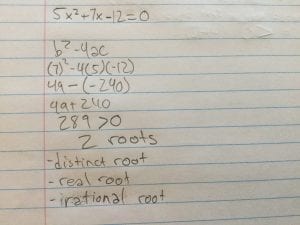This week we dived more into graphing by graphing quadratic inequalities in two variables. It’s basically the same thing as chp. 4 but we have to find out what side of the parabola the answers would come from. You do that by replacing x and y with numbers that aren’t on the line, (0,0) is the easiest so use that the most.
ex:

















